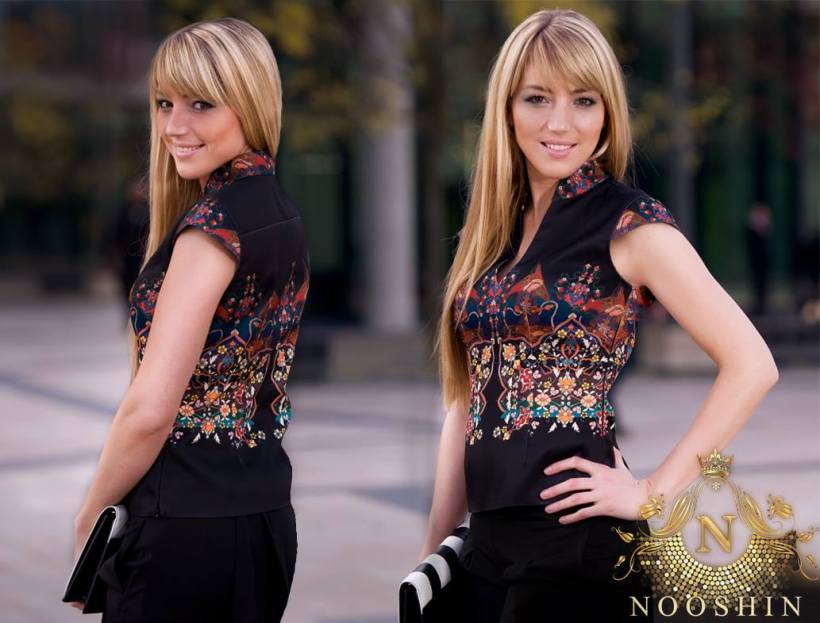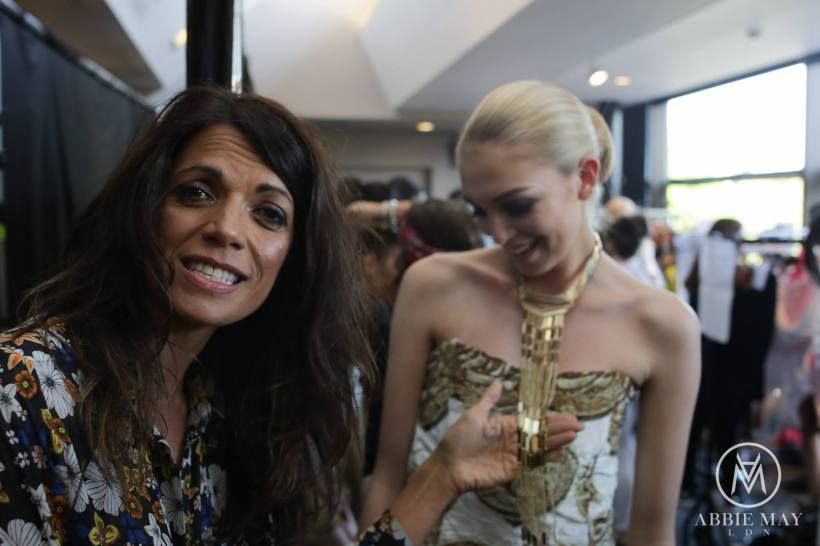International life style reviews
Posted by Global FASHION AND STYLE on AUGUST 21, 2017
EDIT
In conversation with fashion artist Nooshin Moradi
OPEN ACCESS FUNDED BY LONDON INSTITUTE OF MANAGEMENT
UNDER A CREATIVE COMMONS LICENSE
Olivia Porter
This note anchors Nooshin’s journey by placing it in the twin context of the fashion industry and that of internationalisation. Creating and managing a fashion brand involves coping with the peculiarities of the fashion industry. Further, Nooshin’s success in gaining a toehold in the global fashion market throws light on the odds that companies from emerging economies face as they venture into advanced international markets.
Context of conversation with fashion artiste Nooshin Moradi

Nooshin is one of the few Iranian fashion designers to make a name in the international fashion circuit. Hailing from an artistic background , Nooshin’s first brush with the world of fashion is at MFW, her talent and passion for fashion was transformed into a serious business when she was invited by Amanda Moss to join her Fashion family following with LFWt. That was where Nooshin’s international sojourn begins at Liverpool Fashion Week—a landmark in her career as she discovers her distinctive style replete with her trademark colours, embroidery and quirky humour. This not only wins over hard-to-please fashion reviewers but also brings in sales orders from some of the country’s top fashion stores and design orders from well known customers.
Nooshin’s success is exceptional when viewed against the industry in which she operates—the highly idiosyncratic fashion sector. The fashion sector, just as the larger set of cultural industries, that it belongs to, abounds with peculiarities. Consequently, managing a fashion business involves handling issues far more distinct and ambiguous from those surrounding the production of traditional goods and services.
Catering to fashion consumers is complicated as unlike traditional products that largely serve a utilitarian function, fashion products serve an aesthetic or expressive function. Here customers derive value from the symbol meaning that is “experienced”, rather than the physical attributes of the product. As the interview with Nooshin reveals, fashion connoisseurs treat fashion garments as cultural artefacts. It is the symbolic value of these fashion garments that transforms them from mere clothing items into collectors’ items!
Her emergence as a trendsetting designer in this difficult-to-predict market is a remarkable testimony to her ability to imbue his products with symbolic meaning that shape and influence consumer preferences.
However the challenge for Nooshin Moradi is not just to perform her creative potential. Creative tasks require collaboration with other partners, putting together a fashion show involves not just diverse creative talents—designers, stylists, models, make-up artistes, fashion accessory designers and so on—but also “traditional” or “humdrum” workers such as business managers, public relations (PR) agencies, buyers, sales agents and so on. Collaborating with humdrum workers is not only useful, but also critical.
Nooshin’s success in making a mark in the international fashion market is even commendable. Firms venturing into international markets out of Iran would have to battle the well documented country of origin bias —the negative stereotypes about products from emerging economies (a fall out of the negative country image) that typically exists among international customers, especially customers in advanced markets. She comments on the low acceptance levels in most international markets for a Persian fashion brand and ingeniously copes with this problem by registering the business in the UK. This helps to dissociate the business from any ethnic associations and signals to customers as well as the organisation’s international identity.
Shee progressively leverages the platform provided by the various fashion weeks—Washington DC, Liverpool and then London—to build a reputation for her talent and then seeks to reinforce it and finally, as the interview reveals, Nooshin is quick to seize opportunities. She taps on her small network of social and professional contacts to not only extend her design vocabulary (from crafting garments and shoes to sunglasses) but also to reach newer audiences. Perhaps it is this entrepreneurial outlook that sets Nooshin Moradi apart from other fashion designers.

Nooshin says: I’m only doing what I am. It is as basic as that and I love it and it shows in my work, even when people don’t understand the design element in my work, they understand the emotion behind it. There’s a strong element in my designs which is easily identified with me. While it is so important to have a different theme and look, it is even more important to have your own style.
Nooshin would really like to host the Iranian Fashion week in United state soon,